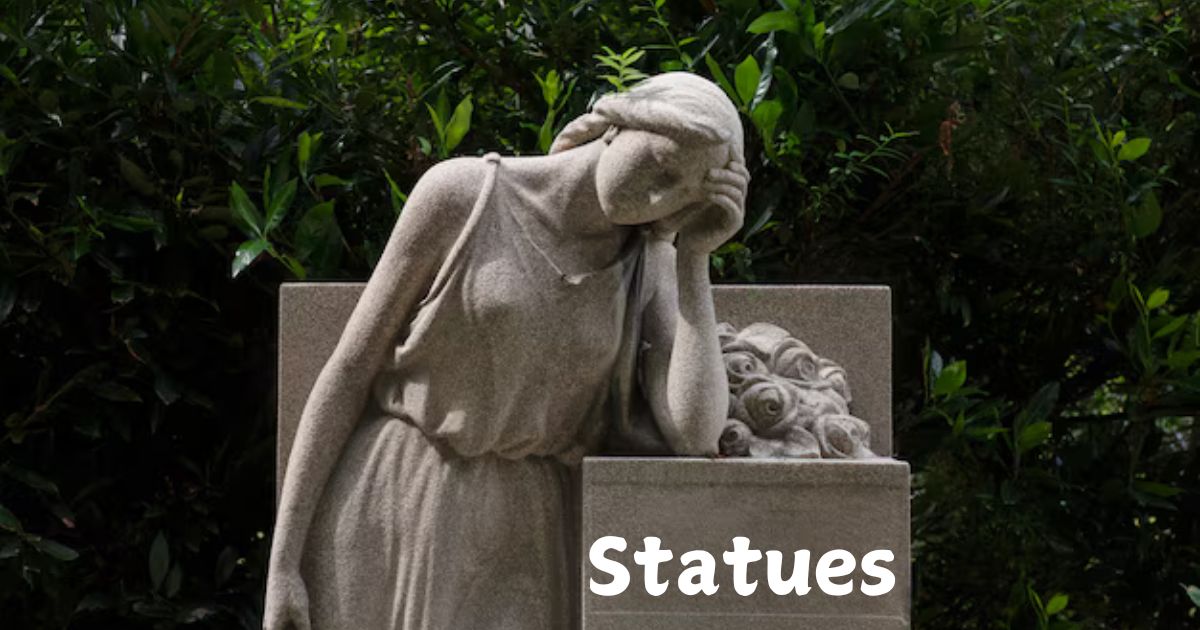Statues have long captivated our imagination, standing as silent witnesses to history, culture, and artistry. They represent more than just stone or metal; they encapsulate stories, ideals, and even the essence of humanity itself. From ancient civilizations to modern artists, the creation of statues is a profound expression of human creativity.
The History of Statues
The history of statues dates back thousands of years. The earliest known sculptures were created by ancient cultures such as the Egyptians, Greeks, and Romans. These civilizations used statues to honor gods, commemorate significant figures, and decorate their environments. Statues often served religious or political purposes, reflecting the values and beliefs of their time.
Types of Statues
Statues come in various forms and styles. Some are realistic, portraying the human figure in great detail, while others may be abstract or stylized. Here are a few common types:
- Figurative Statues: These depict recognizable figures, whether human or animal. They aim for realism and often serve commemorative purposes.
- Abstract Statues: These focus on form and shape rather than realism. They challenge our perception and provoke thought.
- Religious Statues: These represent deities or religious figures, often found in places of worship. They hold significant spiritual meaning for many.
- Public Monuments: Erected in honor of historical figures or events, these statues often adorn public spaces, inviting reflection and remembrance.
The Materials Behind Statues
Statues can be crafted from a variety of materials, each offering unique qualities and aesthetic effects. Common materials include:
- Marble: Renowned for its beauty and durability, marble has been a favorite among sculptors since ancient times. Its fine grain allows for intricate detailing.
- Bronze: This metal is favored for its strength and longevity. Bronze statues can capture fine details and develop a beautiful patina over time.
- Wood: Often used in religious or cultural contexts, wooden statues offer warmth and a unique texture. However, they require careful preservation to last.
- Stone: From granite to limestone, stone offers a robust and timeless option for statue-making, often seen in outdoor monuments.
The Artistic Process of Creating Statue’s
Creating a statue is a labor-intensive process that involves several steps, from concept to completion. It typically begins with sketching ideas and models. Once a design is finalized, the sculptor selects the material and begins the carving or molding process. This stage requires immense skill and patience, as the artist brings their vision to life.
The Cultural Significance of Statue’s
Statue’s play a crucial role in cultural identity. They reflect societal values and commemorate important figures, events, and ideals. In many cultures, statue’s are integral to rituals and celebrations, linking people to their history and heritage.
Statues as Symbols of Power
Throughout history, statue’s have been used to convey power and authority. Equestrian statue’s of rulers, for example, depict leaders in majestic poses, symbolizing strength and dominance. These figures often serve to reinforce the status of those they represent, making them a tool of political propaganda.
Statue’s in Modern Art
In contemporary art, the concept of statue’s has evolved. Many modern artists experiment with materials, forms, and meanings, challenging traditional notions of sculpture. This shift invites audiences to engage with art in new ways, often provoking deeper reflections on society and culture.
Famous Statues Around the World
Several iconic statue’s have become symbols of their respective cities and cultures. Here are a few notable examples:
- Statue of Liberty: A gift from France to the United States, this statue represents freedom and democracy. It stands tall in New York Harbor, welcoming immigrants and visitors.
- David by Michelangelo: This Renaissance masterpiece exemplifies human beauty and artistry. Standing in Florence, it is a testament to the skill and vision of its creator.
- Christ the Redeemer: Overlooking Rio de Janeiro, this statue symbolizes peace and reconciliation. Its imposing figure has become synonymous with Brazilian culture.
The Role of Statue’s in Education
Statue’s serve an educational purpose, offering insight into history, culture, and art. Many educational institutions incorporate statue’s into their environments, using them as tools for discussion and learning. They invite students to explore the stories behind each figure and the context in which they were created.
Statues and Community Engagement
Statue’s often act as focal points in communities. Public sculptures can spark dialogue, inspire creativity, and encourage community pride. They provide spaces for gathering, reflection, and celebration, enriching the social fabric of neighborhoods.
The Preservation of Statue’s
Preserving statue’s is vital for maintaining cultural heritage. Factors such as weather, pollution, and vandalism can damage these works of art. Conservation efforts involve cleaning, restoring, and protecting statue’s to ensure they endure for future generations.
Conclusion
Statues are more than mere objects; they are reflections of humanity’s quest for expression and meaning. From ancient times to the present, they tell stories that resonate across cultures and eras. As we engage with these magnificent works of art, we connect with our history, our values, and our shared human experience.
FAQs
What are the most famous statue’s in the world?
Some of the most famous statues include the Statue of Liberty, Michelangelo’s David, and Christ the Redeemer.
What materials are commonly used to create statue’s?
Common materials include marble, bronze, stone, and wood, each offering unique qualities.
How are statue’s preserved for future generations?
Preservation involves cleaning, restoring, and protecting statue’s from environmental damage and vandalism.
What is the significance of public statue’s?
Public statue’s often commemorate historical figures or events, serving as focal points for community engagement and reflection.
How has modern art changed the perception of statue’s?
Modern artists often challenge traditional notions of sculpture, experimenting with materials and forms to provoke thought and engage audiences differently.
